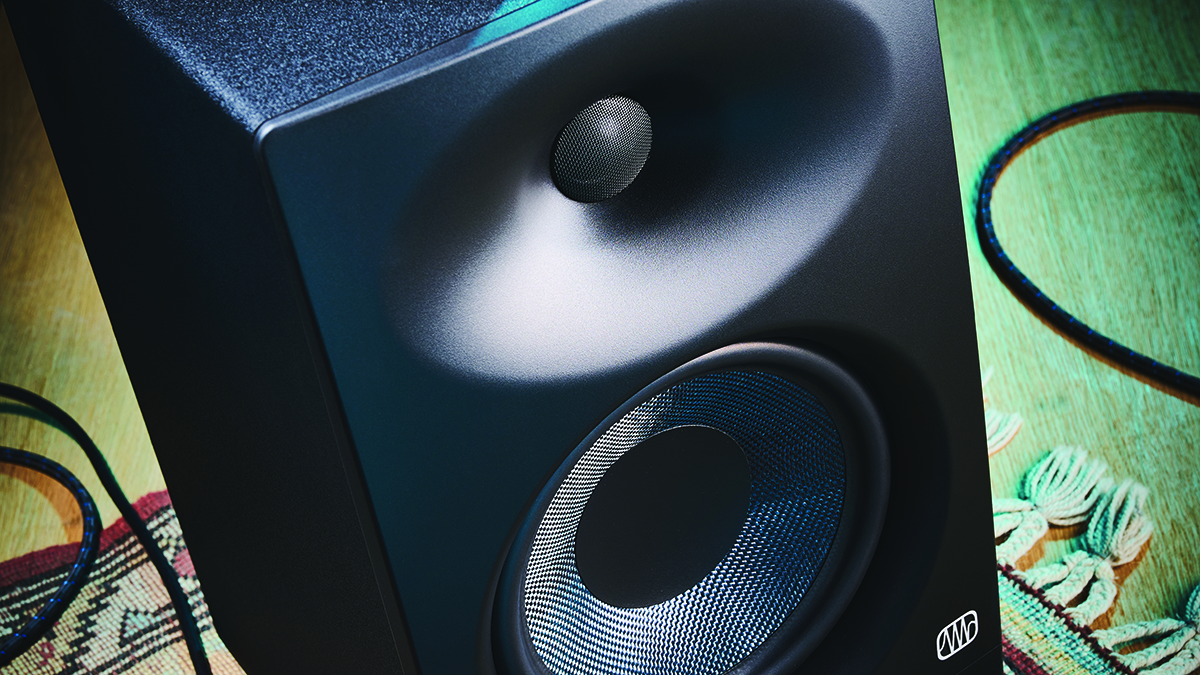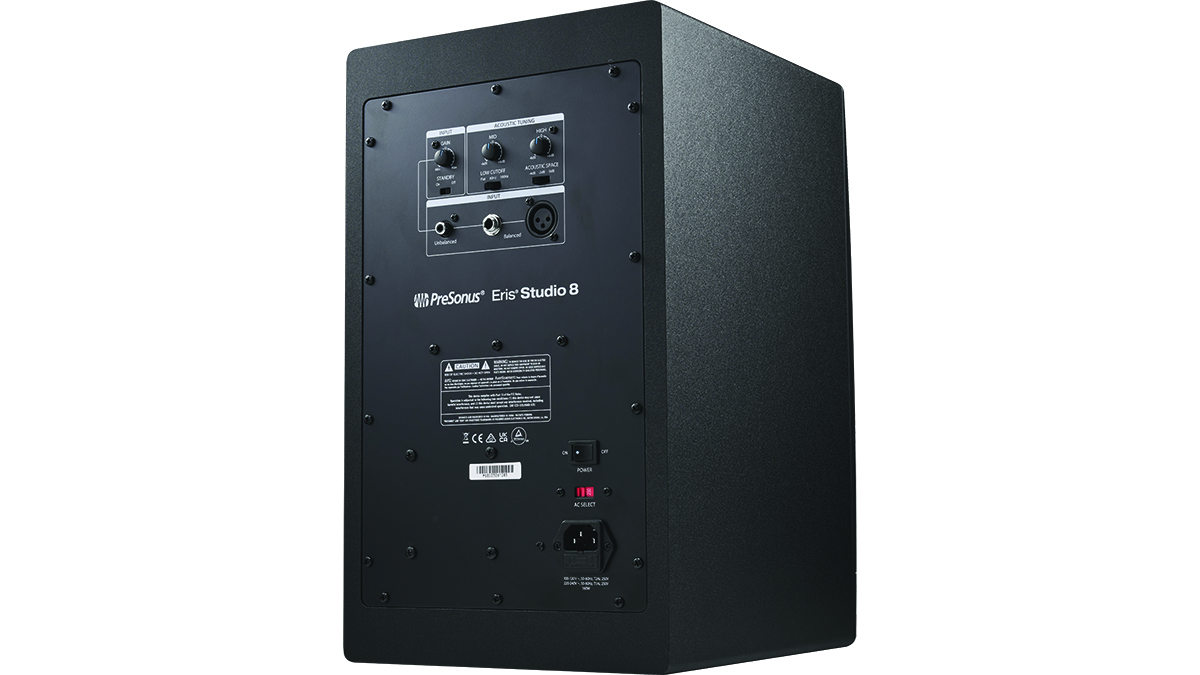
PreSonus Eris Studio 8: What is it?
PreSonus has recently revamped its popular Eris line of studio monitors, and the latest one we have for review is the Eris Studio 8. This large two-way nearfield is an update of the Eris E8 XT and priced at just over £400, a pair offers excellent value.
At 419mm high and just over 10kg, the Eris Studio 8 is a big monitor, even for an 8” design. That said, with a front bass port and the incorporated bass tweaking options, you should be able to mount them reasonably near to a wall, and that certainly makes them viable in smaller rooms.

Visually, the front panel is very similar to its predecessor, although the power indicator is now a central strip rather than an illuminated badge. The LED doubles as a standby indicator (white) if you have the optional power save standby selected on the back panel. The front baffle includes a wide slotted bass port, and the top section is dominated by a large Elliptical Boundary Modelled (EBM) tweeter waveguide. We have to say, this delivers a very wide sweet spot and makes working with these monitors incredibly easy.

PreSonus Eris Studio 8: Performance and verdict
The monitors use quality drivers, with a silk dome 1.25” tweeter, and a woven composite 8” woofer. Back panel input connections include two balanced (XLR and TRS) and one unbalanced (phono). These are joined by input gain and a good selection of acoustic tuning controls. You’ll note there’s no digital connectivity or remote room correction, but we wouldn’t expect these features at this price point.
The Studio 8 uses individual class AB amps for woofer (75W) and tweeter (65W). At full tilt the speakers move plenty of air, delivering not only punch but also noticeable low-end extension. The spec quotes a frequency range down to 35Hz and using an oscilloscope we could hear a gradual tail-off from about 50Hz. This is pretty good going, and on kicks for example, the fundamental pitch is clearly audible and it makes EQing with confidence a lot easier.
Acoustic tuning controls include a low-cut filter (12dB/octave at 80Hz or 100Hz) and also Acoustic Space adjustment, with 2dB or 4dB cut below 800Hz. This is quite impactful and certainly helps if you need to back the speakers into a corner or up to a wall. You also have two EQ bands offering 6dB of boost or cut at 1kHz and 10kHz. We found the high frequencies were ideal in the flat position, but the 10kHz band offers plenty of shaping if you need it. In contrast we found the Studio 8 mid-range a little too reserved, and pushing the 1kHz band by a couple of dB was ideal. We think an additional low frequency EQ band would be a useful inclusion.
Overall, the Eris Studio 8 is a very good-sounding monitor that combines a traditional two-way design with quality components. If you have space for this big, bold monitor, and are happy with traditional rather than digitally controlled room correction, you won’t be disappointed.
MusicRadar verdict: The Eris Studio 8 is an excellent update with great low frequency delivery, and despite its size should work in rooms of all dimensions.
PreSonus Eris Studio 8: The web says
"Their creditable price:performance ratio makes them a good fit for home studios, so if you’re in the market for a pair of eight‑inch monitors in this price range, then the Eris Studio 8s should definitely be on your shortlist."
Sound On Sound
PreSonus Eris Studio 8: Hands-on demos
PreSonus Audio Electronics
Produce Like A Pro
Edward Smith
Reid Stefan
PreSonus Eris Studio 8: Specifications
- KEY FEATURES: Amplification: Class AB, LF 75W, HF 65W Crossover Frequency: 3.5kHz Frequency Response: 35Hz - 20kHz Input Impedance: 10 kΩ Room settings: Acoustic space (0, -2dB, -4dB), low cut 12dB/octave 80Hz/100Hz EQ: +/-6dB at 10kHz, +/-6dB at 1kHz Peak SPL: 106 dB @ 1m Inputs: balanced ¼” TRS and XLR, unbalanced phono.
- CONTACT: PreSonus







